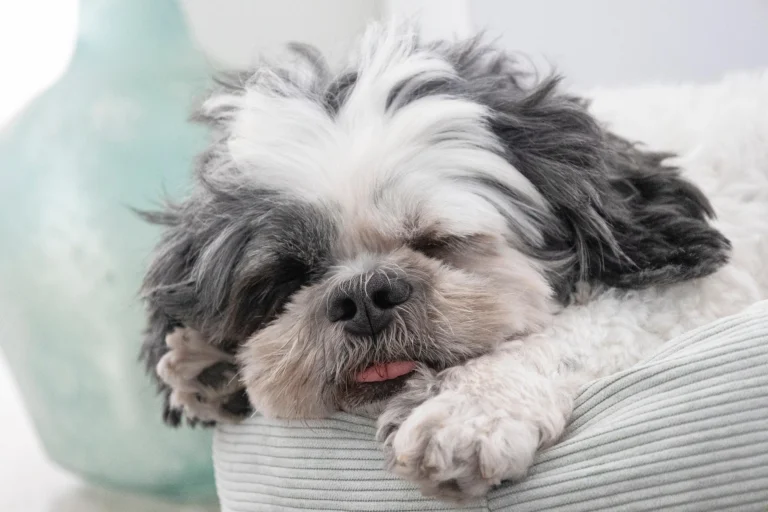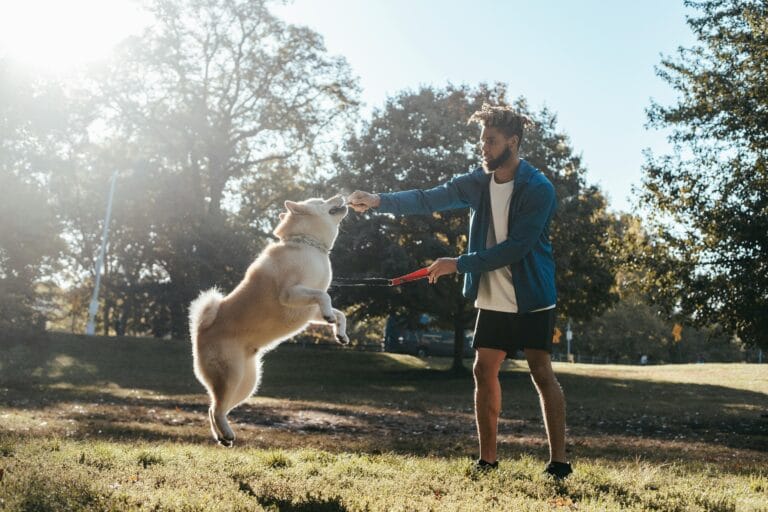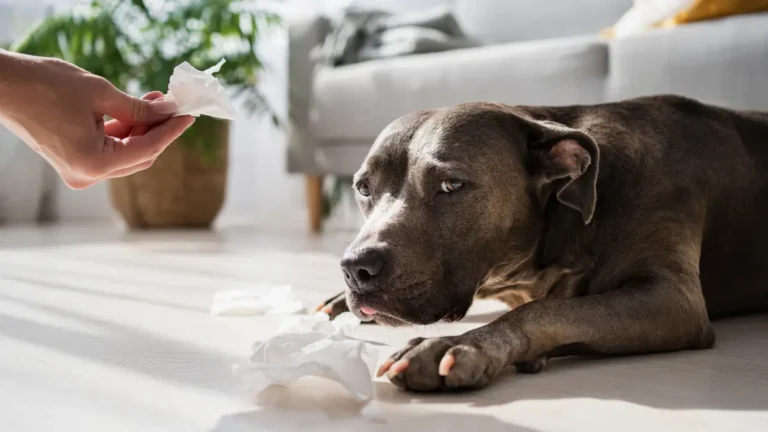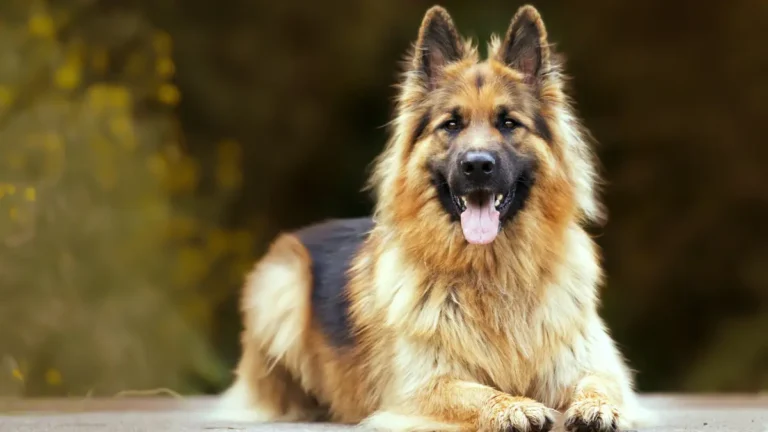Isn’t it wonderful to have a furry companion who is always happy and eager to please? The Bichon Frise and Shih Tzu mix, often called a Shichon or Zuchon, perfectly embodies this joyful spirit. These charming dogs, with their irresistible teddy bear looks, are known for their playful antics and love for snuggling. Let’s dive into the details of what makes this breed so special.
Table of Contents
Quick Overview at a Glance
The Bichon Frise and Shih Tzu mix is a delightful designer breed that combines the best traits of the Shih Tzu and the Bichon Frise. They are small, affectionate, and incredibly cute. Here’s a quick snapshot:
- Height: 9-11.5 inches
- Weight: 9-18 pounds
- Lifespan: 10-18 years
- Temperament: Friendly, affectionate, playful
- Energy Level: Moderate
- Grooming Needs: Moderate to high
Delve into the History
The exact origins of the Bichon Frise mixed with a Shih Tzu are a bit mysterious, but they likely appeared in the late 1990s during the rise of designer breeds. Breeders aimed to blend the Shih Tzu’s outgoing and regal personality with the Bichon Frise’s gentle and loving temperament. The result? A delightful companion perfect for families and individuals as well.
However, it is important to note that the Bichon Frise and Shih Tzu mix, often referred to as a Shichon or Zuchon, is not officially recognized by major kennel clubs such as the American Kennel Club (AKC) due to its status as a designer breed. This means that the Shichon does not qualify for registration or participation in official dog shows and events sanctioned by these organizations.
The Shih Tzu traces its lineage to ancient Tibet, where it served as a royal companion. Similarly, the Bichon Frise, thought to have originated in the Canary Islands, was adored by European royalty for its charm and elegance. The AKC officially recognized the Shih Tzu in 1969 and the Bichon Frise in 1972, cementing their places in canine history.

Paint a Picture of Appearance
Step aside, Instagram influencers—Shichon teddy bear dogs are the real “paw-fluencers” of the dog world! Their teddy bear-like appearance makes them irresistibly adorable. Their soft, double coats come in a stunning array of colors, including cream, white, black, brindle, gold, red, silver, blue, liver, buff, and apricot. Many have charming markings around their faces in shades like black, tan, or white.
Typically standing 9 to 11.5 inches tall and weighing between 9 and 18 pounds, these pocket-sized charmers vary in size depending on their lineage. Their coat texture depends on which parent breed they take after: straight and flowing like the Shih Tzu’s or curly and coarse like the Bichon Frise’s.
Uncover Their Temperament
Bichon Frise Shih Tzu puppies are as gentle as they look. Known for their affectionate and friendly nature, they are equally excited about playtime and cuddles. Their happy-go-lucky attitude and eagerness to please make them ideal companions, even for first-time dog owners. Their manageable size and relaxed demeanor also make them a perfect fit for apartment living.
These dogs are incredibly sociable and generally get along well with new people and other pets. They thrive on human interaction and quickly become a cherished part of any household.
Explore Compatibility
- Good With Kids: Shichon full-grown dogs are patient and gentle with children. However, due to their small size, it’s crucial to supervise interactions with young children to avoid accidental injuries.
Teaching Children How to Interact with Small Dogs
To ensure a safe and enjoyable environment for both children and your Shichon, here are some essential tips to teach kids how to interact gently with small dogs:
- Gentle Touch: Teach children to touch the dog gently and avoid sudden movements. Demonstrate how to pet the dog softly, starting from the head or back, rather than touching sensitive areas like the tail or ears.
- Respect Personal Space: Explain to children the importance of respecting the dog’s personal space. If the dog is sleeping, eating, or seems stressed, it should be left alone.
- No Teasing: Warn children against teasing the dog with toys or food, as this can lead to frustration and potential aggression.
- Supervised Play: Always supervise playtime between children and the dog to ensure that interactions remain safe and respectful.
- Educate on Body Language: Teach children to recognize the dog’s body language. If the dog shows signs of stress, such as growling, yawning, or tucking its tail, it needs space.
- Handling Carefully: Show children how to handle the dog carefully, supporting its body and avoiding picking it up by the legs or tail.
- Positive Reinforcement: Encourage children to reward the dog with treats and praise when it behaves calmly and gently, reinforcing positive interactions.
By teaching these simple yet important rules, you can help create a harmonious and safe environment for both your children and your Shichon.

Assess Intelligence, Energy, and Trainability
- Intelligence: While not the brainiest breed, their eagerness to please makes training enjoyable. They’re attentive learners who thrive with positive reinforcement.
- Energy Levels: Moderate energy needs make them easy to manage. Aim for 30-60 minutes of exercise daily, split between walks and play sessions.
- Trainability: Shih Tzu Bichon mixes are relatively easy to train but may require patience, especially with housetraining. Consistency and high-value treats are key.
- Mental Stimulation: In addition to physical exercise, mental stimulation is crucial to prevent boredom and promote overall well-being. Here are some enrichment activities you can consider:
- Puzzle Toys: Fillable puzzle toys that challenge your dog to figure out how to get treats out can keep them engaged and mentally active.
- Training Games: Engage your dog in obedience training, agility training, or scent work. These activities not only provide mental stimulation but also strengthen the bond between you and your dog.
- Interactive Play: Games like hide-and-seek, fetch, and problem-solving exercises can keep your dog’s mind active and prevent boredom.
- Sensory Stimulation: Provide a variety of textures, smells, and tastes to keep your dog’s senses engaged. For example, you can offer frozen treat-filled Kongs or sensory mats with hidden treats.
- Socialization: Regular socialization with other dogs, people, and new environments helps keep your dog mentally stimulated and reduces the risk of anxiety or behavioral issues.
By incorporating these mental stimulation activities into your dog’s routine, you can ensure they remain happy, engaged, and healthy.
Housetraining Tips
Housetraining a Shih Tzu Bichon mix can be a challenging but rewarding process. Here are some specific strategies to help you succeed:
Crate Training
Crate training is an effective method for housetraining. Here’s how to implement it:
- Choose the Right Crate Size: Ensure the crate is large enough for your dog to stand up, turn around, and lie down comfortably.
- Establish a Routine: Take your dog to the same spot outside each time to create a routine. This could be immediately after meals, naps, and playtime.
- Positive Reinforcement: Praise and reward your dog with treats and affection when they eliminate outside.
- Gradual Freedom: As your dog becomes more reliable with housetraining, you can gradually give them more freedom in the house by increasing the amount of time they spend out of the crate.
Positive Reinforcement Strategies
Positive reinforcement is key to successful housetraining:
- Use High-Value Treats: Reward your dog with high-value treats immediately after they eliminate outside to associate the action with the reward.
- Consistent Commands: Use consistent commands like “go potty” or “do your business” to help your dog understand what is expected.
- Watch for Signs: Pay attention to your dog’s body language. If they start to circle or sniff, it’s likely they need to go outside.
- Clean Accidents Properly: If your dog has an accident in the house, clean the area thoroughly with a pet-safe cleaner to remove any lingering scents that might attract your dog to the same spot again.
Schedule and Consistency
Maintaining a consistent schedule is crucial:
- Feed at Set Times: Feed your dog at the same times each day to help regulate their bowel movements.
- Take Regular Breaks: Take your dog outside at regular intervals, such as every hour, to prevent accidents.
- Be Patient: Housetraining can take time, especially for small breeds. Be patient and remember that accidents are part of the learning process.
By combining crate training, positive reinforcement, and a consistent schedule, you can help your Shih Tzu Bichon mix learn to go potty outside where they belong.
Evaluate Suitability for Roles
- Watchdog: With their friendly and affectionate nature, Shichon teddy bear dogs are not suited to be watchdogs. They’re more likely to greet strangers with wagging tails than warnings.
- Service Dog: While their gentle temperament makes them great emotional support animals, their small size limits their ability to perform physical service tasks.

Provide a Guide to Care
- Grooming:
- Brush their coat 2-3 times a week to prevent mats and tangles.
- Bathe monthly or as needed if they get dirty.
- Schedule professional grooming monthly for trims and coat maintenance.
- Trim nails every 4-6 weeks and clean their ears regularly to avoid infections.
- Shedding: Considered hypoallergenic, they shed minimally and produce little dander, making them a good choice for allergy sufferers.
Address Health Concerns
Shih Tzu Bichons are generally healthy dogs with a lifespan of 10-18 years. However, they may inherit certain conditions. Here’s a detailed look at these potential health issues and some preventative measures you can take:
Brachycephalic Obstructive Airway Syndrome (BOAS)
- Condition: Common in flat-faced dogs, causing breathing difficulties.
- Prevention: Ensure your dog stays cool in hot weather, avoid strenuous exercise, and consider surgical interventions if recommended by your vet.
Luxating Patella
- Condition: Dislocation of the kneecap, treatable with rest or surgery.
- Prevention: Maintain a healthy weight to reduce pressure on the joints, provide regular exercise to strengthen the surrounding muscles, and avoid jumping or high-impact activities.
Allergies
- Condition: Skin irritation and redness may occur.
- Prevention: Use hypoallergenic products, keep your dog’s environment clean, and consider regular grooming to reduce allergen exposure.
Diabetes
- Condition: Managed with insulin and diet adjustments.
- Prevention: Monitor your dog’s weight, ensure a balanced diet, and avoid overfeeding. Regular blood tests can help early detection.
Cataracts
- Condition: Cloudy eye lenses can be corrected with surgery if severe.
- Prevention: Regular eye exams, a balanced diet rich in antioxidants, and protecting your dog’s eyes from injury.
Cushing’s Disease
- Condition: A hormonal imbalance causing symptoms like increased thirst and appetite.
- Prevention: Monitor your dog’s behavior and physical changes, ensure regular vet check-ups, and maintain a healthy weight.
Addressing Separation Anxiety in Bichon Frise and Shih Tzu Mixes
To replace the section on Health Concerns, add the following content to provide a comprehensive view of the emotional well-being of the Bichon Frise and Shih Tzu mix:
Addressing Separation Anxiety
In addition to the physical health concerns, it is crucial to address the potential behavioral issues that can affect the Bichon Frise and Shih Tzu mix. One common issue is separation anxiety, which can manifest in various ways.
Recognizing Separation Anxiety:
- Destructive Behavior: Dogs may engage in destructive activities such as chewing furniture, digging, or destroying household items when left alone.
- Barking and Howling: Excessive barking or howling can be a sign of distress and anxiety.
- Pacing and Restlessness: Dogs might pace back and forth, seemingly restless and unable to settle down.
- Accidents in the House: Despite being house-trained, dogs with separation anxiety may have accidents in the house when left alone.
Managing Separation Anxiety:
- Gradual Separation: Start by leaving your dog alone for short periods and gradually increase the duration. This helps your dog get accustomed to your absence.
- Leave a Familiar Object: Leave an article of clothing, such as a t-shirt or sock, with your scent on it to provide comfort.
- Provide Mental Stimulation: Engage your dog in puzzle toys filled with treats or interactive games to keep them occupied while you are away.
- Exercise Before Leaving: Ensure your dog gets adequate physical and mental exercise before you leave the house to reduce anxiety.
- Training and Desensitization: Train your dog to associate your departure with positive outcomes. For example, leave a treat or toy each time you leave the house.
- Professional Help: If the anxiety is severe, consult with a professional dog trainer or a veterinarian for additional guidance and support.
By recognizing the signs of separation anxiety and implementing these strategies, you can help your Bichon Frise and Shih Tzu mix feel more secure and reduce the stress associated with your absence. Regular vet checkups and a balanced lifestyle can also contribute to mitigating this issue.
General Preventative Measures
- Regular Vet Check-ups: Annual or bi-annual check-ups can help detect health issues early.
- Proper Dental Care: Regular brushing and dental checks to prevent dental problems.
- Weight Management: Keep your dog at a healthy weight through balanced feeding and regular exercise.
- Vaccinations and Preventatives: Stay up-to-date with vaccinations and use preventatives for parasites like fleas, ticks, and heartworms.
- Healthy Diet: Feed a high-quality, balanced diet formulated for small breeds, and avoid common allergens.
- Exercise and Mental Stimulation: Provide moderate exercise and engage your dog in mental stimulation activities to keep them healthy and happy.
Regular vet checkups, a balanced diet, and exercise can help mitigate these risks. For more tips on keeping your dog healthy, visit our Dog Health and Care Tips section.

Recommend a Suitable Diet
Feed your Shih Tzu Bichon mix a high-quality diet that is tailored to their specific life stage to ensure optimal health and development.
Puppies (0-12 months)
For Shih Tzu Bichon puppies, it is crucial to provide a nutrient-rich diet that supports rapid growth and development. Here are some key considerations:
- High-Protein Content: Puppies need a diet rich in lean protein sources such as chicken, fish, or lamb to support muscle growth.
- Balanced Fatty Acids: Omega-3 and Omega-6 fatty acids are essential for skin, coat, and brain development.
- Calcium and Phosphorus: These minerals are vital for bone growth and development. Look for puppy food with the right balance of these nutrients.
- Frequent Feedings: Puppies require more frequent feedings, typically 3-4 times a day, to maintain their energy levels and support growth.
Adults (1-7 years)
For adult Shih Tzu Bichons, the focus shifts to maintaining overall health and energy levels:
- Moderate Protein: Adult dogs still need a good amount of protein but not as high as puppies. Look for adult dog food with balanced protein levels.
- Maintain Healthy Weight: Ensure the food is formulated to help maintain a healthy weight, as these dogs can be prone to obesity.
- Joint Health: Include ingredients that support joint health, such as glucosamine and chondroitin, to prevent future joint issues.
- Feed 2 Meals a Day: Adult dogs typically need two meals a day, with about ½ to 1 cup of dry kibble per meal.
Seniors (8 years and older)
As your Shih Tzu Bichon ages, their dietary needs change to support their declining energy levels and potential health issues:
- Lower Protein: Senior dogs may require less protein but still need high-quality protein sources.
- Easy to Digest: Opt for senior dog food that is easier to digest, often with added fiber and fewer fillers.
- Joint Support: Continue to emphasize joint health ingredients to alleviate any arthritis or joint pain.
- Manage Weight: Senior dogs may gain weight more easily, so monitor their food intake and adjust portions accordingly.
- Single or Two Meals a Day: Depending on the dog’s activity level, they may need one or two meals a day.
Consult Your Vet
Always consult with your veterinarian to determine the best diet for your Shih Tzu Bichon mix based on their individual needs, health conditions, and lifestyle. Regular check-ups will help ensure that your dog is receiving the optimal nutrition at every stage of their life.
Guide Readers in Determining if This Breed is Right for Them
Before bringing a Shih Tzu Bichon mix into your home, it is crucial to consider several important factors to ensure you make an informed decision.
Selecting Reputable Breeders
If you decide to purchase from a breeder, it is essential to find a reputable one. Here are some tips to help you make the right choice:
- Research and Recommendations: Look for breeders who are recommended by reputable breed clubs, veterinarians, or other dog owners. Conduct thorough research online and read reviews.
- Health Clearances: Ensure the breeder has health clearances for the parents of the puppies on issues common to the breed, such as brachycephalic obstructive airway syndrome, luxating patella, and eye problems.
- Transparency: A reputable breeder will be transparent about the health, temperament, and ancestry of the puppies. They should also allow you to visit their facility and meet the parents of the puppies.
- Contracts and Guarantees: Reputable breeders often provide contracts that include health guarantees and spay/neuter requirements.
- Registration: Check if the breeder registers their dogs with a recognized kennel club like the American Kennel Club (AKC).

Considering Adoption
Adopting a Shih Tzu Bichon mix can be a rewarding and compassionate choice. Here are some benefits and steps to consider:
- Benefits of Adoption: Adopting a dog can save a life and open up a space in a shelter for another dog in need. It also often includes spaying/neutering, vaccinations, and microchipping.
- Shelters and Rescues: Look for local animal shelters or breed-specific rescue groups. These organizations often have a variety of breeds and mixes, including Shih Tzu Bichon mixes.
- Adoption Process: The adoption process typically involves an application, an interview, and sometimes a home visit to ensure the dog is going to a suitable home.
- Post-Adoption Support: Many shelters and rescue groups offer post-adoption support, including training advice and medical assistance.
Their Gentle Nature and Needs
- Gentle Nature: Their gentle nature makes them great with kids, but their delicate size requires care.
- Apartment Living: They are perfect for apartment living due to their size and low noise levels.
- Exercise and Affection: They need moderate exercise and thrive on affection and attention.
- Training: While easy to train, housetraining may require patience and consistency.
By carefully considering these factors, you can ensure that you are making the best decision for both you and your new furry companion.
Conclusion
The Bichon Frise and Shih Tzu mix is a loving and devoted companion who will bring joy to any home. Their affectionate nature, playful antics, and irresistibly cute looks will quickly win your heart. Whether you’re looking for a Shichon full-grown or a playful puppy, with the right care and attention, you can look forward to many happy years with this charming breed. If you’re curious about other adorable hybrids, check out these amazing Husky mixes. And for tips on feeding and care, see why a Bichon Frise puppy might eat less than usual.





